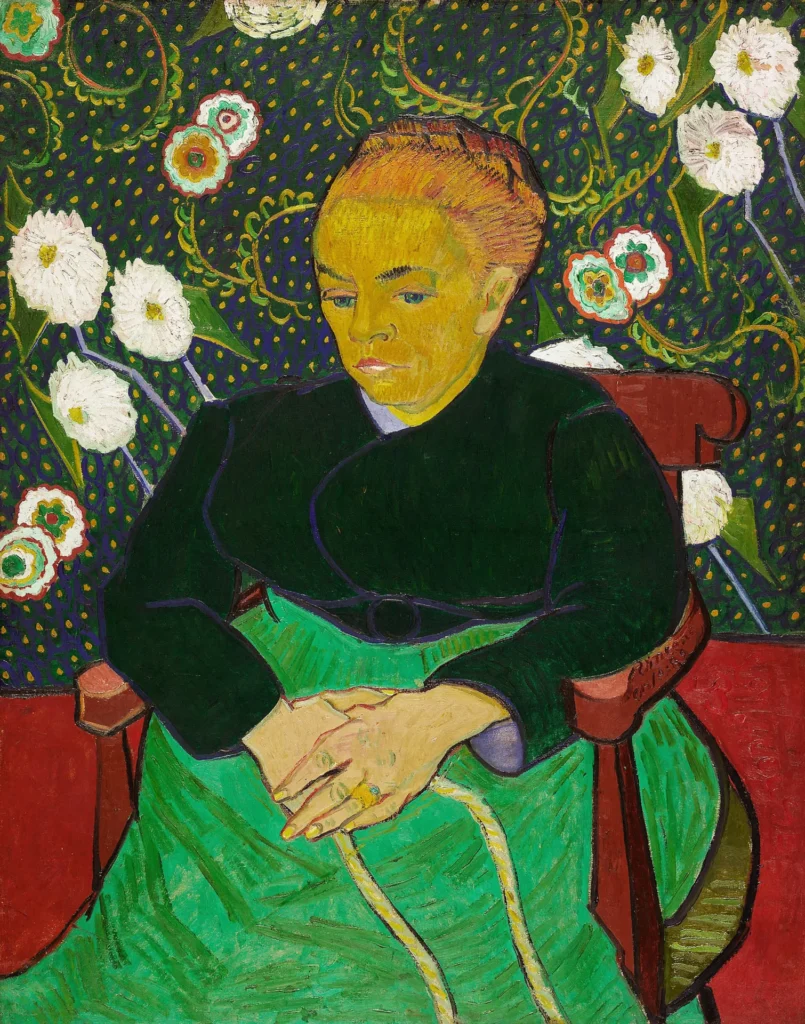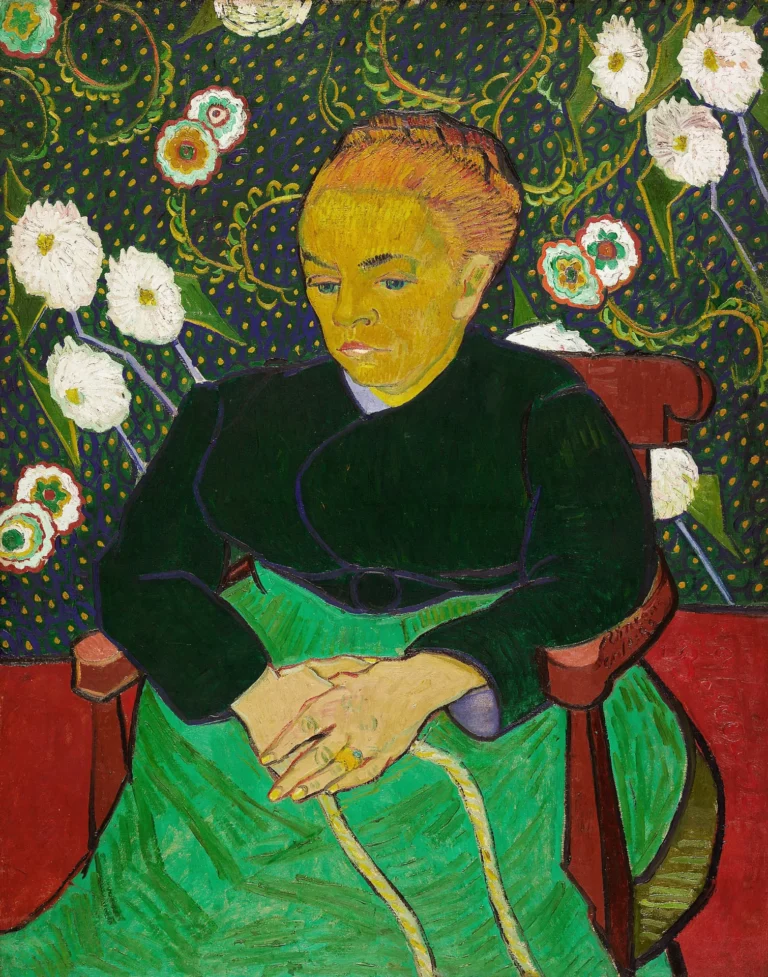La Berceuse (Augustine Roulin)
La Berceuse depicts Augustine Roulin, the wife of Van Gogh’s friend and postman, Joseph Roulin, as a nurturing, maternal figure. Painted with warm colors and floral patterns, she holds a rope used for rocking a cradle, symbolizing comfort, warmth, and maternal strength. Van Gogh’s careful use of color—rich greens, pinks, and yellows—creates a sense of harmony and timelessness, making this portrait both a personal homage and an idealized vision of motherhood.
1889
About the Artwork
In Arles, Van Gogh became close friends with the Roulin family, who became something of a surrogate family for him. He often painted their portraits, capturing their personalities with warmth and respect. La Berceuse, meaning “the lullaby,” is his tender depiction of Augustine Roulin, inspired by his fascination with the theme of motherhood and care. Holding a cradle rope, Augustine appears as a comforting, universal mother figure.
Did You Know
Though often considered one of the great masters, Van Gogh received very little formal training in art. He taught himself by studying the works of other artists and practicing obsessively.
Fun fact: Van Gogh painted five versions of La Berceuse, each with subtle variations. He was so captivated by Augustine’s motherly image that he revisited the theme to explore new color and pattern combinations.
The word “berceuse” is French for “lullaby” or “cradle song.” By giving the painting this title, Van Gogh imbued it with a sense of musicality, as if Augustine’s presence alone could soothe and calm.










